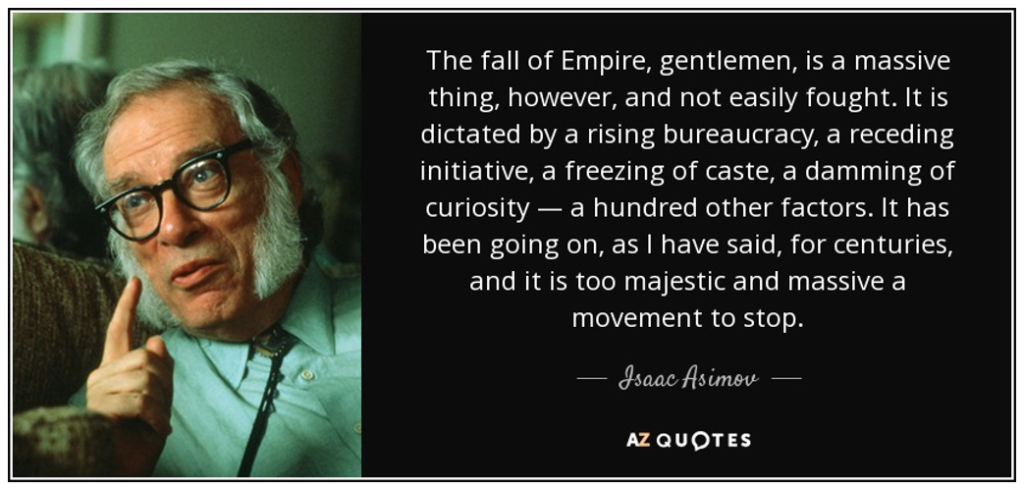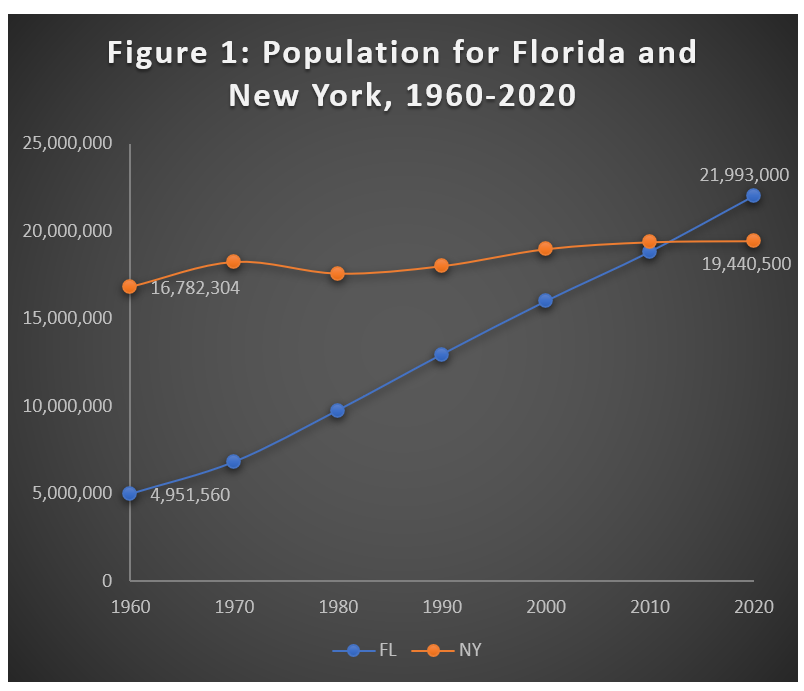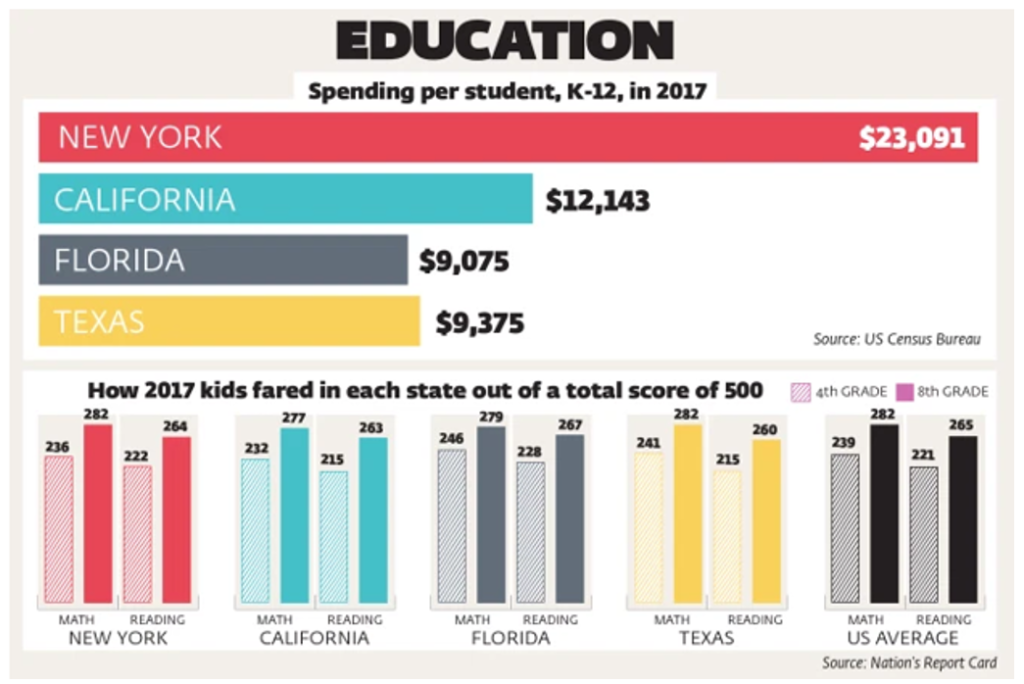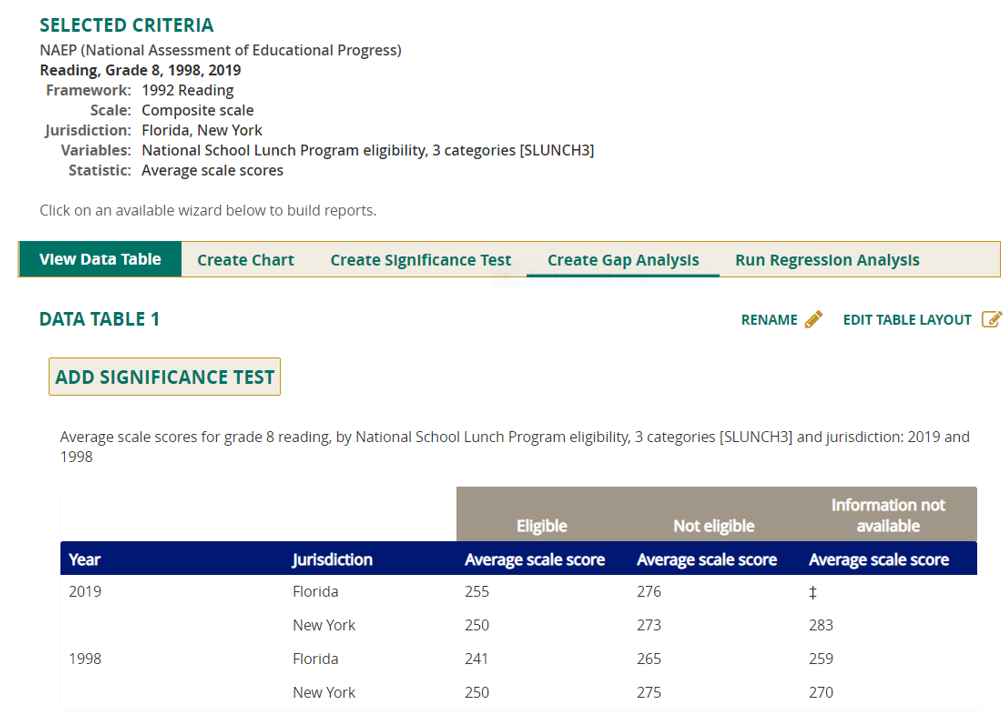 New York has had the huge blessing of economic geography that people leveraged through tremendous effort to great advantage. Its location on the Atlantic and its proximity to the Hudson River gave it a reach deep into the country with the competition of the Erie Canal, and then out into the world. Meanwhile, the state’s highly favorable location for the transport of goods led to a clustering of firms specializing in finance.
New York has had the huge blessing of economic geography that people leveraged through tremendous effort to great advantage. Its location on the Atlantic and its proximity to the Hudson River gave it a reach deep into the country with the competition of the Erie Canal, and then out into the world. Meanwhile, the state’s highly favorable location for the transport of goods led to a clustering of firms specializing in finance.
Now locate this combination in a free-wheeling country with the world’s largest amount of arable land in the temperate zone, abundant natural resources and an unmatched zest for the industrial revolution. New York City became not only the nation’s cultural and financial capital, but the world’s financial and cultural capital, the center of enormous wealth. An Empire State in every sense.
Florida, however, has been gaining on New York – and leaving it behind – for decades. The Sunshine State seems very well positioned to accelerate this trend.

In December, reports began to circulate that New York-based finance titan Goldman Sachs is considering a move to Florida. Such a move would follow a long-established net migration pattern from New York to Florida.
Florida has displaced New York as the largest state on the Atlantic coast. Absent a large change in trends, it seems likely that either North Carolina or Georgia will be the second largest, with little likelihood that New York will move back into first place in our lifetimes.
Among other advantages, Florida has a very large edge over New York in providing better quality public services per public dollar invested, including in education. Florida policymakers can expand this advantage in 2021.

This graphic from the New York Post shows per-pupil spending in New York, California, Florida and Texas, along with NAEP math and reading scores. These comparisons look even more lopsided if broken down by subgroups and/or viewed over time.
Back in the 1990s, New Yorkers at least could point to superior results in return for their higher spending, but this is no longer the case. For instance, NAEP’s eighth grade reading exam found both low-income and middle/high-income students reading about a grade level above their Florida peers. Now, Florida has the advantage, despite spending less.

While New York’s situation – sky-high taxes and poorly performing schools – may seem terrible for families, it looks like a “mission accomplished” for the state’s public sector unions. Getting an ever-increasing amount of money to achieve about the same or less may be a bad look, but it helps the organizational bottom line. Increased spending leads to increased hiring which leads to more people paying dues.
Note, however, that New York’s poor children scored no better in 2019 than in 1998 despite a 62% increase in inflation-adjusted spending per pupil between 1998 and 2016. That, ladies and gentlemen, represents truly shameless rent seeking.
Margaret Thatcher noted that the problem with this sort of thing is that you eventually run out of other people’s money. In New York’s case, there is a growing shortage of people willing to pay for it. Florida, by my way of thinking, has been doing well by doing good – allowing people to live better and freer lives by efficiently producing public services of improving quality.
Keep it up. Where Florida leads, others will surely follow.


